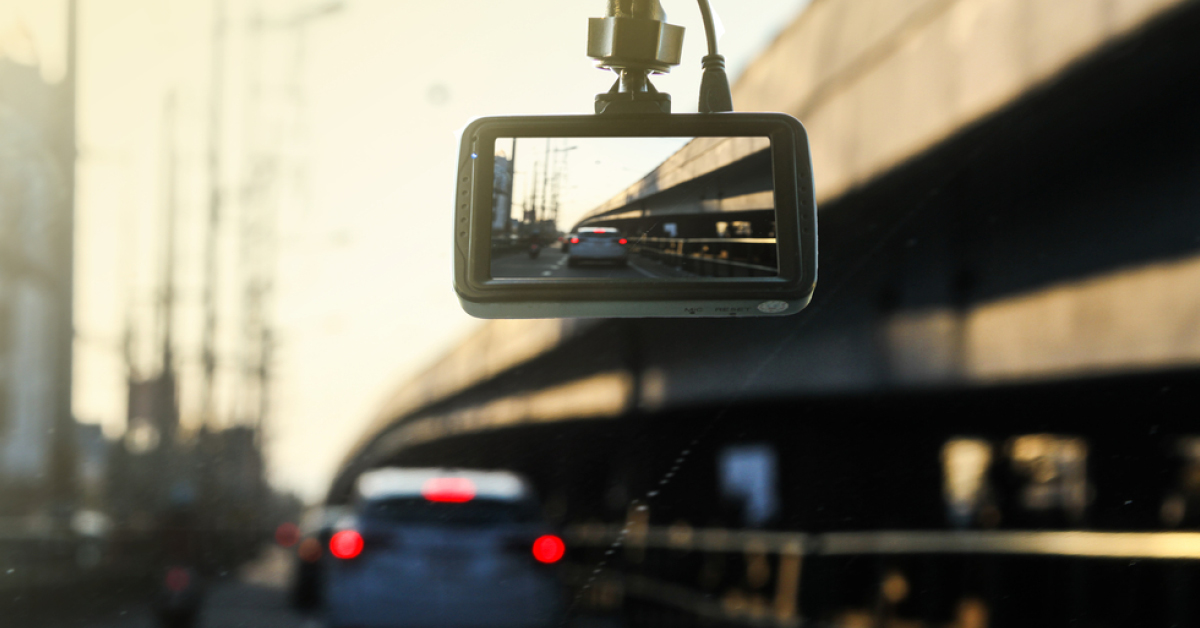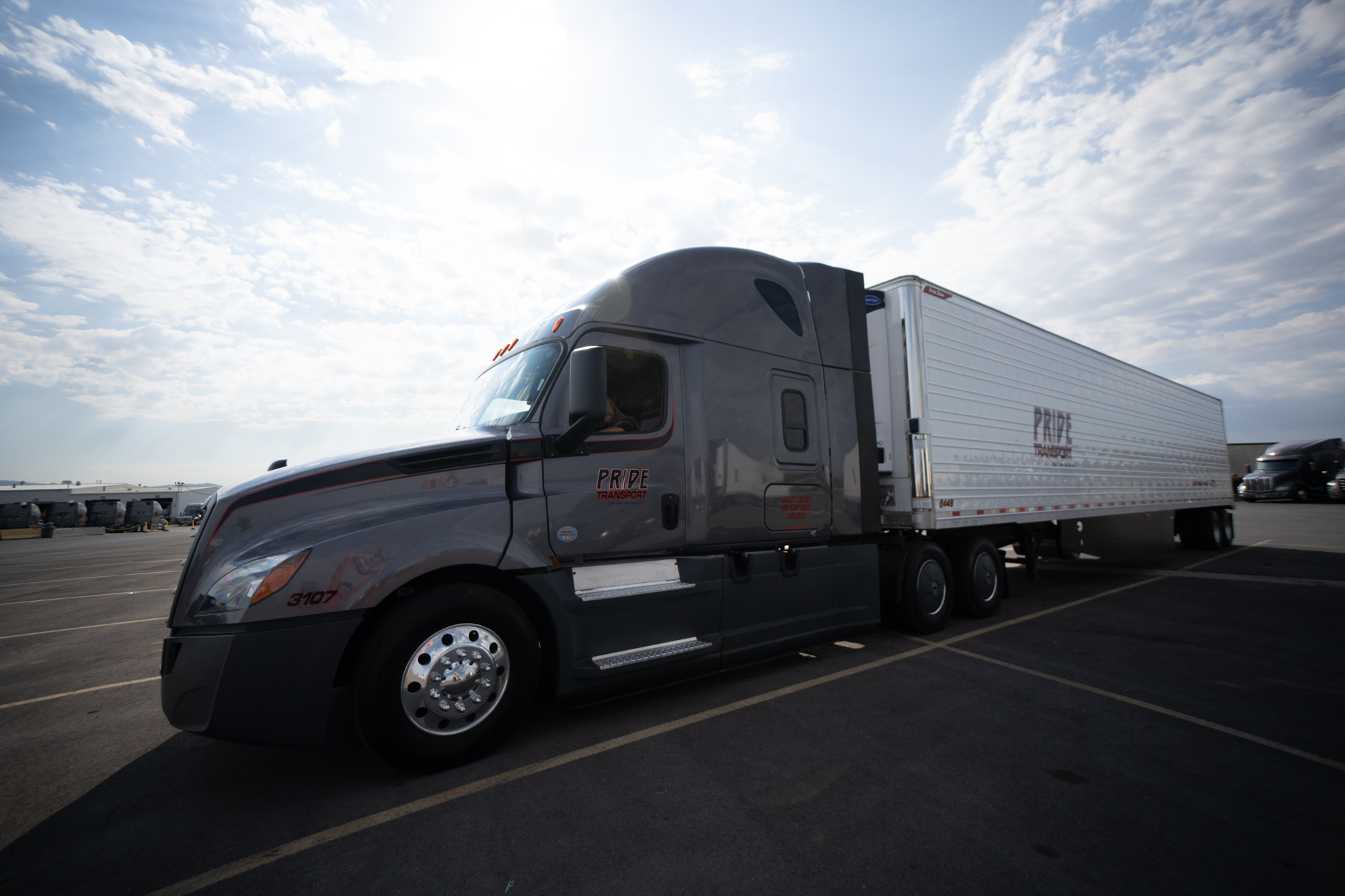by Pride Transport | Nov 06, 2020
A Bit of History
As the story goes, Maud Mellers, a pub landlady in Hull, England, was the dashcam’s inventor. While preparing for her upcoming holiday to Australia, Maud had her husband drive her around town while filming out the window. Fifty years later, her son developed the forgotten film footage and discovered a time capsule from the 1960s. Although commonplace today, the idea of filming while driving was entirely novel back then.
In the United States
What we now know as the dashcam was first seen in Texas in the 1980s. Texas police officers used the early form of the dashcam. But, they were hardly the high tech, dash-mounted beauties we see today. In the beginning, the dashcam was a video camera on a tripod, mounted with views of the front and read windows of the police vehicle. They were large, bulky, and unruly when it came to managing them.
The Scam Cam
The dashcam became more mainstream in the early 2000s. We saw a glut of false insurance claims during this time due to people purposely throwing themselves in front of vehicles and forcing drivers to pay huge settlement sums. Reports of this desperate and lucrative act were spreading, and so, the dashcam became the only way to fight against this fraud.
Evolution of the Cam

Times have changed, and technology has gotten much sharper. The big, tripod-mounted cams of the past gave way to large video cameras that were “conveniently” mounted on the dashboard. However, these first-generation dashcams were still bulky and hard to manage.
The modern dashcam, which is no longer a wonder or a novelty, is much more compact. The smaller size allows drivers to video the world while being less obtrusive. Some cars even have dashcams built-in when you drive them off the lot.
Now, we see dashcams everywhere. Taxis and Uber drivers use them because they are easy to mount, and they protect drivers from unlawful activities. Uber drivers use them and often have them aimed inside the car. Drivers say that they like to have a record, especially when doing pick-ups at night from bars, people, and activities. Again, they help in lawsuits and accident claims.
From the humble beginnings of being a rehearsal for a holiday to an invaluable tool for fighting off unlawful litigious activity, the dashcam has become ubiquitous in our modern society.
Do You Need a Dashcam?
Despite them being virtually everywhere, does a driver really need a dashcam? Some would argue that they aren’t necessary, but others swear by them. In Russia, even the most dilapidated vehicles have dashcams. Why? People report that police corruption in the former Societ state is rampant. Everyone needs some kind of proof to protect themselves against false accident claims, unlawful police violence, or shakedown scams run by the police departments.
In the United States, it seems that, more and more, dashcam video is being entered into evidence in abuse trials and unlawful acts committed by some questionable members of the police force. Slowly but surely, the dashcam is becoming more of a must-have.
Reasons for the Cam

In the present day, it’s hard not to be cynical about the need for a dashcam. Yes, some folks have them to record journeys and share those images with friends and family. There is still a bit of innocence and wonder connected to the dashcam. But, for the most part, they are used for protection. So, despite the sinister undertones of having a dashcam, they are a good idea and an especially good idea for truck drivers. Most trucking companies who care about the safety of their drivers would agree. Here are some reasons why.
Evidence of an Accident
This is the most substantial reason for having a dashcam. Accidents happen; we all know that. What we don’t all know is who’s at fault. If you have a dashcam mounted in your truck cab, if the accident happens, you’ll have clear proof of the who, what, when, and where. Simple as that. The dashcam video has got you covered. The video, unless it’s highly doctored, doesn’t lie. That’s great if you’re not at fault. If you are, however, the dashcam is going to show the truth to the world.
Report Terrible Driving
How’s my driving? We’ve all seen that question on the back of a commercial vehicle gliding down the highway. There’s usually a number for you to call and a serial number of an ID number for the vehicle. Most trucks on the road have this; however, cars do not. Nope, a passenger car driver can be a complete idiot on the road, and there’s no real way to combat that. Unless you have a dashcam, reporting reckless driving without proof is impossible. Your dashcam footage is proof, and it can get a dangerous driver off the road and possibly save lives.
Stop, in the Name of Fraud
One of the most prevalent forms of fraud we see today is insurance fraud. We see this when a driver purposefully causes an accident and blames it on the other party involved. This bit of cheating is done purely for monetary gain. If there is no evidence, the perpetrator of the fraud, the fraudster, can get money from the other party. Also, the fraudster could get money from the insurance company if they claim an injury from the accident that they caused by which there is no proof. With your dashcam in your cab, you have evidence against this kind of nefarious activity. You have evidence against the scam, but you may also be able to prove that the fraudster caused the accident. Thus, you can shut down their illegal activity and make the roads a little safer for all.
What Happens While You’re Away
You need to sleep. You need to eat. You need to answer the call of nature. All of those times take you away from your truck and leave it vulnerable to chowderheads looking to do damage or steal stuff. A dashcam can record even when the engine isn’t running. So, if you come back from the little drivers’ room and there’s a ding on your bumper, go to the cam and see what happened. You can also keep an eye on your truck if you leave it out overnight. You can watch for vandals or thieves and assure your truck is safe.
Training and Coaching
The dashcam is an invaluable tool for training and coaching new drivers. You can see what the drivers see. After a run, you can go back over the video and point out exactly where the new driver could have made a better choice or where they did something extraordinary. As the new driver progresses, the trainer no longer has to be in the cab with them. After the new driver returns to the base, the trainer can sit down with them, go over the tape and see their progress. An immediate visual example will stay with a new driver much longer and get more in-depth than just a verbal session. Dashcams can make for better drivers.
The, Did You See That, Factor
How many times have you started a sentence with; you will not believe what I saw on the road today? Only to feel the story fizzle because you just couldn’t capture the awe, the wonder, the abject stupidity of what you witnessed while on the road in words. Enter the dashcam. It captures and records all of those I cannot believe I just saw that incidents so you can share them. It also captures the beauty of a sunrise, the splendor of a landscape, the charm of a small town, and the smiles on the faces of the folks who are happy to see you. Things you can share when someone asks, why are you a truck driver?
A real-life example

A Pride Transport Driver named Joe Cottrell was traveling southbound in the center lane of I80 in a construction zone on a warm sunny day. He had traffic on the left and right sides as the lanes shifted left; a white pickup truck drifted into Joe's right rear tire, damaging both vehicles.
Joe followed the pickup truck to an exit where the Highway Patrol was waiting due to a call made by the driver of the pickup truck. The driver of the pickup truck claimed Joe drifted it to him. Joe informed the officer of the dashcam, asked for his email address, and had Pride email the video to the officer.
Upon receiving the video, the officer determined the pickup had crossed the line and hit Joe. Due to past experiences Joe will tell you without the video, he indeed would have been cited, and Pride Transport would have paid for the damage.
From the American Trucking Association
A report released this week by the American Trucking Associations concludes that many more times than not, car drivers are at fault when cars and trucks crash with one another. ATA’s report rounded up reports from several extensive studies for its findings, including the Federal Motor Carrier Safety Administration and National Highway Traffic Safety Administration and groups like the AAA Foundation for Traffic Safety and the University of Michigan’s Transportation Research Institute.
The University of Michigan Transportation Research Institute — a leader in truck-related crash research, says ATA — studied 8,309 fatal car-truck crashes to determine fault. Eighty-one percent of the time, car drivers were assigned at fault, says the study, versus 27 percent for truck drivers.
A similar study done by the National Highway Traffic Safety Administration in 2003 studied 10,092 fatal accidents, deeming that cars were responsible for 91 percent of the time during head-on crashes, 91 percent of the time in opposite-direction sideswipes, 71 percent of rear-end collisions, and 77 percent of same-direction sideswipes.
FMCSA’s studies looked at 6,131 fatal car-truck crashes over three years in 2007, 2008, and 2009. In 2007 and 2008, cars were assigned fault in 85 percent of crashes. The number dropped to 81 percent in 2009.
ATA President Bill Graves says FMCSA needs to take this information into account for its Compliance, Safety, Accountability program, and figure out a way to deal with crash accountability in scoring.
“Every crash, and every fatality and injury suffered on our nation’s highways is a tragedy,” said ATA President Bill Graves said. “Preventing them from happening requires a proper understanding of the causes of these crashes. It is also tragic that carriers and drivers across this country are saddled with guilt and blame for many crashes they could do nothing to prevent.
Thanks, Maud, for filming Hull’s streets from your car; you started a bit of a technological revolution. With its Humber Bridge and white telephone boxes to the big box stores and online retailers from Hull’s quaint town, the dashcam has had quite a journey. And, from pleasure to protection, it has a myriad of uses. Today, if you’re a truck driver, along with food storage, a good bed, and good tunes on the radio, you’re going to be better off if you have a dashcam in your cab.